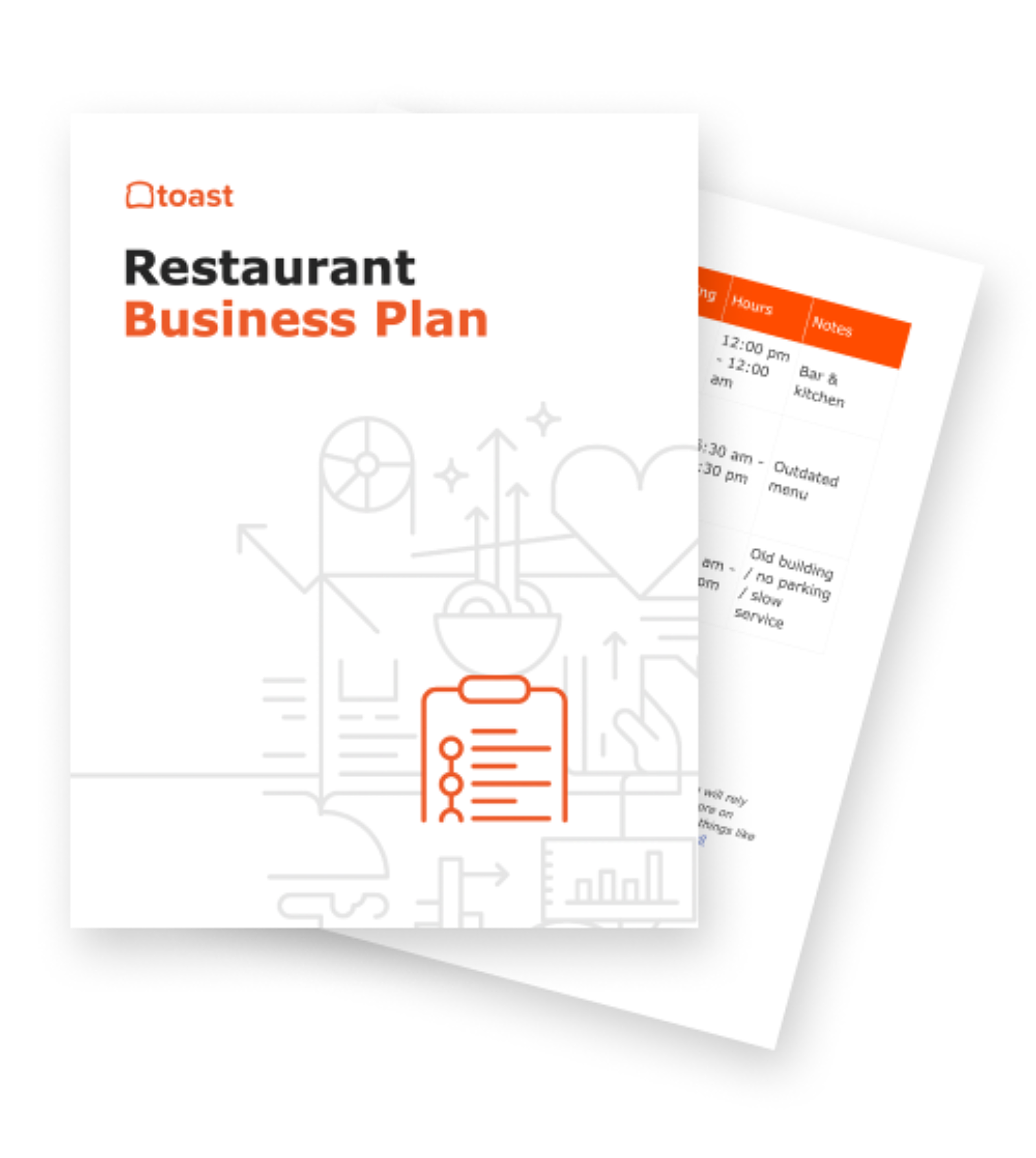Restaurant Business Plan Executive Summary
Create a killer restaurant business plan, with these tips on writing an executive summary.
Tyler MartinezAuthor


Restaurant Business Plan Template
No matter where you’re at in your restaurant ownership journey, a business plan will be your north star. Organize your vision and ensure that nothing is overlooked with this free template.
Get free downloadThe executive summary is the first section of any business plan. As a presentation of your vision for the restaurant, it includes information about your menu, your consumers, your team, and your financial plans.
We’ll share business plan writing tips that will help you attract attention and build a compelling executive summary.
How to Write a Business Overview
A business overview is an introduction that “hooks” the reader – it should provide just enough info about the restaurant to get them interested in learning more. Include an outline of the ownership structure, location, type of restaurant, and customer experience in the business overview.
This section may also introduce key members of your team, along with a staff training and retention plan. Potential investors will want to see that your business plan is exciting and sustainable.
Finally, paint a detailed picture of the restaurant’s brand. In addition to written descriptions, use branded graphics, sample color schemes, and photos of the style of decor you imagine. Show readers that you’ve considered all the details.
What Products Will the Restaurant Serve
Capture the imagination of potential investors. The origins and inspirations of your menu are selling points for your brand.
Will you serve items based on family recipes passed down through the generations? Or will you offer a creative take on American cuisine?
The kind of food your restaurant serves is directly related to your concept. Include information about what makes them both unique, and how they fill a gap in the market.
Who Will the Target Consumer Be
Competition in the restaurant industry is fierce, which makes finding a unique niche imperative. Potential investors will want to know how you’ll stand out in the market.
Build a few customer personas using market data about the demographics, characteristics, and behaviors of diners. Then, describe how your restaurant will cater to those guests.
It’s cliche, but “location, location, location” is instrumental to success. Describe how your menu appeals to local tastes, and how the price point is accessible to the target market.
Who Are the Key Management Team Members
You can’t do it all yourself. If your business relies on the talents of a specific chef or the skills of a rockstar FOH manager, include descriptions of those people (and their qualifications) in this section.
If you still need to hire for key roles, describe the hiring and retention strategy for highly-skilled labor.
What Are the Success Factors
What does success look like for this restaurant? What contingencies have to go your way? What are the risks of your business model? Having concrete goals and knowing what obstacles stand in the way will impress potential investors.
It might seem better to avoid writing about potential pitfalls. But showing investors that you have a plan to succeed—and that you know how to overcome setbacks—lets them know you’re serious about the business.
What is the Financial Plan
Include an overview of financial plans. Answer common questions that investors and banks will have, such as how much funding you need to raise, the loans and lines of credit you’ll rely on, and how long it will take for the business to become profitable.
Calculate and report on the upfront fixed costs of opening your restaurant. These are the costs you’ll have to keep up with to keep the business afloat, such as equipment, maintenance, and loan repayments.
Give investors an idea of the variable costs. Things like labor, raw materials, marketing, and delivery costs are likely to change from month to month, so provide a range.
In a later section of the business plan, you’ll provide different reports and financial projections. For the executive summary, focus on the broad strokes of your financial plans. Answer questions like how you plan to raise startup funds and potential profit margins based on projected sales.
Writing your Restaurant’s Executive Summary
Writing about finances can be a challenge–here’s how you can make the details of your restaurant’s finances an interesting read (really!).
- Always keep the audience in mind. Use some of the financial vocabulary introduced in this article.
- Find your voice. The executive summary is about making an impression. Infuse your unique vision into your writing style.
- Keep it simple and clear. It's tempting to throw in lots of clever flourishes when writing, but clarity should be the number 1 priority, especially when discussing financial details.
- Related Business Plan Resources
Is this article helpful?
DISCLAIMER: This information is provided for general informational purposes only, and publication does not constitute an endorsement. Toast does not warrant the accuracy or completeness of any information, text, graphics, links, or other items contained within this content. Toast does not guarantee you will achieve any specific results if you follow any advice herein. It may be advisable for you to consult with a professional such as a lawyer, accountant, or business advisor for advice specific to your situation.
Read More
Subscribe to On the Line
Sign up to get industry intel, advice, tools, and honest takes from real people tackling their restaurants’ greatest challenges.


